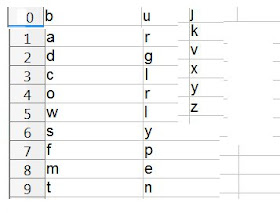The first thing I noticed is in the networks section, every channel I could think of that we get of on our cable plan has a website that has all the content from the channel. Except online it seems you can watch any episode of the show that ever aired, start it whenever you want, pause and rewind and so on. So that got me thinking about cancelling the cable all together. I'd still need the internet part of the service but not the box or that service. It seems the content providers are cutting out the middle man of the cable companies except it happens that the cable companies are also the ones providing the internet so not completely.
Not to mention all the other streaming content in all the other boxes. But I feel like it leaves something to be desired first googling for a show to find out where on the internet you can watch it and navigating through each website's different layout to eventually find the episode you want and finally playing it.
So that brings me to my idea, I think it would be nice to have a front end to all this content where you can type in the name of a show and it returns links to the video you want that you can click on and it takes you to the relevant website and starts playing the video. But then I started thinking of more features the front end could have like keeping a list of the shows you like and giving you a notification of which shows had released new episodes and providing links to where you could watch them. So no more having to web surf to every individual site and find the show you like and check if there are new episodes or having to know when they air on TV it would just give you a list of what new stuff was available. I'm still coming up with more features the front end could have but I think you get the idea.
Anyway there's so much content on the internet now but it'd be nice to design a cohesive front end to easily find what you want and perhaps some additional features like I mentioned. I think it would be nice if it worked with a remote. Basically to try and capture what is nice about watching it on cable but with all the nice features that internet streaming provides.








